- Home
- C. S. Lewis
Studies in Medieval and Renaissance Literature Page 4
Studies in Medieval and Renaissance Literature Read online
Page 4
Of him scullen gleomen godliche singen.
Of his breosten scullen æten aðela scopes.
Scullen of his blode beornes beon drunke.6
(18856–61)
Geoffrey, doubtless from the same source, had said ‘His deeds will be meat to their tellers’,7 but Laʒamon gives more.
We thus know neither what (exactly) Laʒamon’s MS of Wace contained nor from what other sources, oral or written, he supplemented it. I believe, myself, that many, or even most, of those passages peculiar to the English Brut which I shall mention are in fact Laʒamon’s own. But I must not assume this. In order to avoid committing myself I shall therefore speak no more of Laʒamon but simply of the Brut, of the text itself. Who, or how many people, or in what proportions each, made it what it is, is a question I cannot answer. This inability of course frustrates our curiosity as scholars, and it puts out of use our characteristically modern critical habits. There is no question here of finding the single author, totally responsible for his work of art, and expressing his unique personality through it. But this frustration is instructive, and it is fortunate that the text which meets us at the very threshold of Middle English poetry should so clearly render the modern approach impossible. If criticism cannot do without the clear separation of one work from another and the clear unity of the individual author with the individual text, then criticism of medieval literature is impossible.
The metre of the Brut has often been described and I shall not deal with it at length. Sometimes for a line or so it conforms to the classical Anglo-Saxon pattern:
æðela inwurðen,
wihte wal-kempen, on heora wiðer-winnan.8
(76–8)
At the opposite extreme we get
He makede swulc grið, he makede swulc frið
monien laʒen gode, þe lond swuððen stode.9
(4254–7)
Internal rhyme had appeared in Maldon and was (like consonance) regular in certain Old Norse metres: the real novelty is the absence of alliteration. To an ear trained on Beowulf, a text which oscillates thus may at first be as repulsive as ‘monkish hexameters’ were to the Humanists. But one grows reconciled to it in the end; and not, I think, only because one’s standards have been lowered by habituation. The types of classical Old English half-line are, after all, blocks of pure speech rhythm. So are the half-lines of the Brut’s new rhymed (or consonanced, or assonanced) lines. Hence they lie down together not uncomfortably. There is no real parallel to the jarring effect we should get if alcaics were suddenly introduced among elegiacs or octosyllabics amid blank verse. There is, too, a tendency for one norm or the other to predominate over fairly long stretches. Battle-pieces, appropriately, often keep close to the old metre. The new, often used for pathetic, derisive or gnomic comment, has its own rustic pungency. Notice its effect in the following where it comes after two lines of fairly pure alliterative verse:
‘. . .
And ʒif þu him abidest he þe wule binden,
quellen þine leoden and þi lond aʒen’.
Ofte wes Arðure wa; neuere wurse þene þa.10
(20379–84)
If the Brut is only partially Anglo-Saxon in metre, it is almost wholly so in style. Expressions that recall the old poets meet us at every turn: Godes wiðer-saka (1808; of Gogmagog), mid orde and mid egge (5202), sæ-werie (6205), weorld-scome (8323), gumene ælder (12178).11 If they are not always exact reproductions, this makes them more interesting. It shows that the poet is not merely imitating, as Claudian, say, imitated the Augustans, but working in a live tradition. Hence his resemblance to his predecessors is not limited to vocabulary. Arthur’s prayer, with its accumulation of more or less synonymous phrases (almost kenningar), comes in the very accents of Hrothgar:
Lauerd drihten crist, domes waldende,
midelarde mund, monnen froure,
þurh þine aðmode wil, walden ænglen.
Let þu mi sweuen to selþen iturnen.12
(25567–74)
The Brut is Anglo-Saxon in style for the best reason: because it is Anglo-Saxon in temper. Its outlook, its most recurrent emotions, its sense of values, all belong to the old order.
This brings us to an instructive paradox. In the opening lines the Brut promises to tell the history of the Engle (13): actually it tells that of the Britons when they had been conquered, killed, and dispossessed. Even if the word Engle is merely a careless slip, it is no bad symbol of what is to follow. This poem, while Anglo-Saxon in style and temper, is wholly British in its conscious sympathies. For those Germanic invaders who were Laʒamon’s real ancestors and whose language he wrote, the Brut has hardly a good word to say. They are treacherous, heathen hounds. Best deal with them as Aldolf did with Hengest when he swiped off his head, gave him good burial after his own heathen fashion (for he was after all a brave fighter) and then
bad for þere sæule þat hire neuere sæl neore.13
(16723–4)
We may suspect that the Brut’s view of the English invaders against whom Arthur fought has been much coloured by memories of a far more recent invasion. At l. 7116, significantly, it speaks of the Normans coming to England mid heore nið crafte.14 But no such explanation for its British partialities is really needed. Centuries later when we no longer had cause to hate the Normans we still somehow accepted the Britons (as represented by Geoffrey) for our ancestors and delighted in this supposed link with Arthur, Cassibelaune, Brennes, and the Trojans. The consciousness of race, or (if you prefer) the illusion of race, seems hardly to have existed. Nor is race much use to us as critics. If there was a historical Arthur he was probably a Roman. His legend is Celtic in origin. The particular handling of it which we are now considering is the adaptation, thoroughly Anglo-Saxon in spirit, of a Norman poem. Its later dissemination is the work of French poets and romancers. Its modern developments are almost exclusively English and American. We should use a very misleading metaphor if we said the legend had a Celtic ‘kernel’; ‘for, when he hath the kernel eate, who does not throw away the shell?’ If we threw away what is not Celtic we should have left something other than the Arthurian legend which has really mattered.
From what has already been said it will be obvious that the Brut is a very different poem from Wace’s Geste as we have it, and must have been very different from any redaction of Wace which we can imagine. The mere language determines this. Feollen þa fæie15 has a ring which nothing could have in French octosyllabics. The habitual images and attitudes of the English poem add another difference. An angel, or that early aviator King Bladud, has, not wings, but a feðerhome16 (2874, 25871). Heroes may speak of their exploits in the devout manner of Beowulf himself: godd hit me iuðe þat ich hine igripen habben17 (16549). Characters give one another a great deal of advice, sometimes, as may be thought, portentously, but sometimes, as in the old poetry, with magnificent weight—
Nu þu ært al ane of aðele þine cunne.
Ah ne hope þu to ræde of heom þat liggeð dede.
Ah þenc of þe seoluen. Seolðen þe beoð ʒiueþe;
for selde he aswint þe to him seolue þencheð.18
(17934–41)
But the differences go far beyond this kind of thing. The Brut is much more archaic and unsophisticated than the Geste. One can easily believe that Wace was familiar with real, contemporary courts and camps. But the Brut sees all its battles in terms of the heroic past. Strategical features are blurred or omitted. Instead, we get the warhedge standing like a grey wood,19 faces turning pale, many a grey-haired warrior hewn with sword,20 broad-bladed spears broken and cloven shields21—
Heowen hardliche hælmes gullen,
falewede feldes of fæie blode.
And þa heðene saulen helle isohten.22
(18316–21)
It paints its courts in equally old-fashioned colours. In the Geste as we have it the Roman ambassadors are true diplomats, elderly men, well-dressed, carrying olive branches, walking slowly and behaving with much dignity. In the Brut they
are
þeines ohte mid palle bi-þehte.
Hæʒe here-kempen, hehʒe men on wepne.23
(24741–4)
The Norman gaiety and lightness do not get into the Brut at all. There is a striking example a few lines later when Arthur consults with his lords about his answer to the Romans. It is a delightful scene in Wace. The King holds his council in a stone keep called the Giant’s Tower. As they go up its spiral stair, Oador, who was a man of jokes, calls out merrily to Arthur who happens to be in front of him. This threat from Rome, he says, is welcome. We have had far too much peace lately. It softens a man. It encourages the young bachelors to spend too much time dressing, with an eye to the ladies. Gawain, overhearing this, says Cador need not bother his head about the young men. Peace after war is very pleasant. So is love. Bright eyes teach chivalry. Thus they jested. Now turn to the Brut, 24883–972. First, by a tiny touch, it alters the whole lighting. It cannot mention the tower without adding
An ald stanene weorc; stiðe men hit wurhten.24
(24885–6)
With this characteristically Beowulfian glance at the remoter past everything becomes at once darker, graver, more wintry. There is no prattle on the stairs. When everyone is seated in his place, Cador rises and expresses his view about the corrupting influence of peace in a set speech, seriously. Then Walwain wraððede hine swide.25 His praise of peace has nothing to do with ladies’ eyes—
God is grið and god is frið þe freoliche þer haldeð wið,
and godd sulf hit makede þurh his godd-cunde—26
(24957–60)
and there is nothing sportive about his disagreement with Cador. It is a real strife, a flit (24966), and Arthur, as if he knew that swords might be out in a minute, has to cry out
Sitte adun swiðe, mine cnihte alle.
And ælc bi his lifen luste mine worden.27
(24969–72)
Equally instructive are the different eulogies which the Geste and the Brut give of Arthur. In Wace he is one of Love’s lovers. He founded those courtesies which courts have followed since. He lived in great state and splendour. In the Brut, he wes þan ʒungen for fader, þan alden for frouer28 (19936–7). Thus everywhere the Brut is heavier, more serious, more plangent than its Norman counterpart. Provided that we carefully define for ourselves the sense in which we are using the word, we may say that it is more barbaric and less civilized.
We must not misunderstand this. It has to be admitted that the Brut at one point (22841 seq.) introduces an atrocity of which Wace and Geoffrey are innocent. But it was something done in hot blood. In general the Brut is a kinder work than the Geste. It is both fiercer and more tender. The Norman courtesy can be callous, the Norman lightness can be cynical; the Brut is, at bottom, more sensitive. Its favourite heroes, if rough-hewn, remember the sufferings of common men. Its Brennes, as soon as he has conquered Rome, starts repairing the war damage, prevents a massacre, forbids plunder, and summons back the refugees (flæmen) with the assurance that they shall have peace and live under the laws of their own country (5938–69). Its Vortimer, at his accession, undertakes to emancipate all slaves (14852). Its Arthur resolves that if he conquers France,
Auere ælche ærmen mon þe æð scal iwurðen,
and wurchen ic wulle muchel godes wille.29
(23741–4)
It may, no doubt, be suspected that the sympathies of the Brut here reflect the humble condition of its author. But they are not confined to the poor. It dwells lovingly on Arthur’s discharge of his veteran knights when he bade them go with joy and repent their sins, never carrying weapons more, but living the rest of their days religiously.30 It extends even to Pagans—provided, of course, they are not Saxons—as in its lament for Julius Caesar
Wale þat eæuere ei sucche mon in to eælde sculde gan.31
(7223–4)
And to the Caesar whom it thus laments it independently attributes courtesy and chivalry in his treatment of the captured Cassibelaune (8942 seq.). It alone shows us Ygærne, in private, sorrowing for the lives which Uther’s love for her will cost (18616 seq.). Its conceptions are sometimes finer than those of Wace. Androgeus, though a traitor fighting against Cassibelaune, warns his men to take the king alive and give him no wound, ‘for he is my lord and kinsman’ (8605).
Another distinction of the Brut is its love for the supernatural. It knows that a fairy smith, on aluisc smið, made Arthur’s byrnie (21131). Wace, following Geoffrey, had peopled Loch Lomond with prophetic eagles; the Brut adds
uniuele þinge.
Þat water is unimete brade; nikeres þer badieð inne,
þer is æluene ploʒe in atteliche pole.32
(21744–8)
Of another strange water it adds alfene hine dulfen, elves dug it (21998). It interpolates the statement that as soon as Arthur came on earth elves took and enchanted the child and gave him their gifts (19253 seq.). It could have learned from the Geste that Arthur after his last battle was carried to Avalon for the healing of his wounds and that the Britons still look for his return thence. The Brut likes the passage so well that it reproduces it twice (23067 seq., 28610–41), making us much surer than Wace had done that Avalon is a fairy country, since Arthur is taken thither by Argante ‘the queen’, ‘the fairest of all elves’. Let us notice, however, that the Brut’s marvels are not all Celtic. The fairy smith was called Wygar. The nikeres and their pool might have come straight out of Beowulf. And the word I have translated ‘elves’ has to do duty both for the fées of continental tradition and for our own more formidable ylfe.
So far I have been speaking of differences between the Brut and the Geste which are not necessarily differences of poetic merit. Except in the scene between Cador and Gawain, where the Geste is in my opinion superior, a man might reasonably prefer either. Certainly if a Gigadibs could have existed among the Normans and had deigned (and been able) to read the Brut he would truly have said that it ‘lacked contemporaneity’. I now turn to those of its peculiarities which seem to me to be also superiorities.
First of all, it might have been written by someone who had read Aristotle and learned that a narrative poet ought to speak as much as possible through the mouths of his characters and as little as possible through his own. Again and again where our text of Wace merely says that people issued such and such orders, or had such and such disputes, or gave one another such and such news, the Brut sets them talking. I should say there was twenty or even thirty times as much dialogue in it as in the Geste; besides prayers, soliloquies, and the like. It is often extremely vigorous. Arthur’s speech (20825–98) after the submission of Childric is a good example.
But of course the author (or authors) of the Brut did not need to have read Aristotle. This reiterated use of the dramatic method is part and parcel of the general intensity with which it grasps all that it treats. It is far more committed, more engaged, closer to its matter, than the Geste. It shows us happening what the Geste often merely records. It knows how everyone looked and behaved: how Corineus, after his great speech on the ingratitude of Locrin, brought down his axe and shattered the stone the King stood on (2311); how Godlac, on hearing of his mistress’s marriage, swooned in his chair and the courtiers threw cold well-water on his face (4516 seq.); how Pantolaus and his crew must have appeared after their long voyage, with their tattered clothes and their indifference to decency (6271 seq.). No one who has ever watched for the return of the fishing fleet after bad weather will miss the graphic reality of the following, where the two vikings watch the storm-tossed fleet of Ursula coming in:
And swa heo leien i þan æit-londe and iseʒen þat weder stronge;
iseʒen scipen an and an, while ma, while nan,
þeonne feowere þenne fiue. . . .33
(12033–7)
The Brut’s certainty as to what you would have seen if you had been present creates character. We are perhaps told of too many people
Þeo hit up bræc hit wes god þat he spec—34
(5431–2
et passim)
though it certainly brings vividly before us a certain type of slow starter. Far more interesting is the process whereby Merlin—little more than a name in the Geste—becomes impressive in the Brut. In both texts he tells Uther how to get the monoliths for Stonehenge. This is a mere necessity of the plot. The Brut adds
Þus seiden Mærlin and seoððen he sæt stille
alse þeh he wolde of worlden iwiten.35
(17232–5)
He is liable to such stillnesses. On another occasion, having been asked a question, he
sæt him stille longe ane stunde,
swulc he mid sweuene swunke ful swiðe.
Heo seiden þe hit iseʒen mid heore aʒen æʒen
þat ofte he hine wende swulc hit a wurem weore. . . .36
(17906–13)
Whether this is how wizards (what we’d call mediums) really behave, I don’t know, but I think the passage would carry immediate conviction even without the line I have italicized. It is, however, the real masterpiece. Here is another. After Uther’s death Wace merely tells us that the bishops and barons sent a message to Arthur calling upon him to be King. Tantamne rem tam negligenter? The Brut tells us how three bishops and seven knights sought the youth out (he was only fifteen) in Britanny, and gives their speech. Then
Arður sæt ful stille.
Ænne stunde he wes blac and on heuwe swið wak;

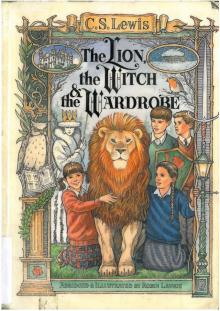 The Lion, the Witch, and the Wardrobe
The Lion, the Witch, and the Wardrobe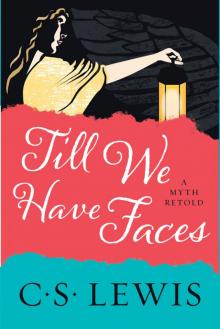 Till We Have Faces
Till We Have Faces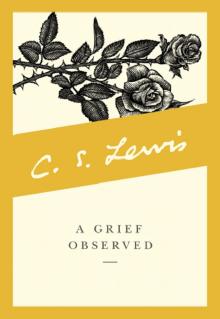 A Grief Observed
A Grief Observed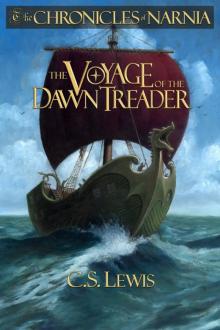 The Voyage of the Dawn Treader
The Voyage of the Dawn Treader The Four Loves
The Four Loves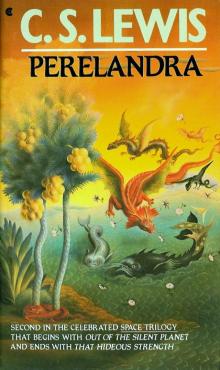 Perelandra
Perelandra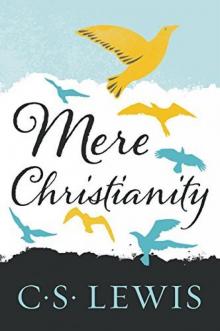 Mere Christianity
Mere Christianity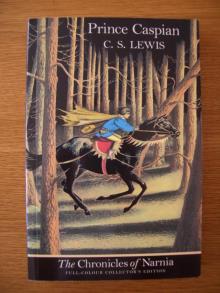 Prince Caspian
Prince Caspian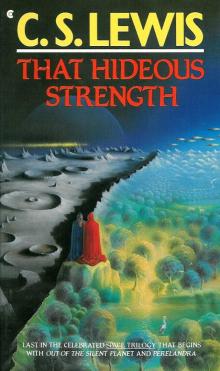 That Hideous Strength
That Hideous Strength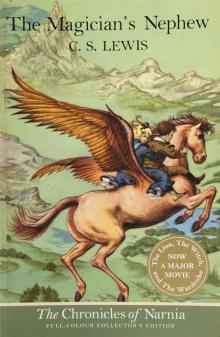 The Magicians Nephew
The Magicians Nephew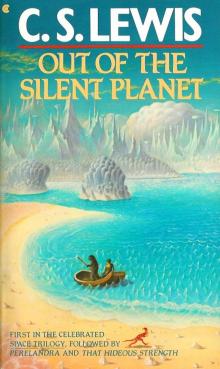 Out of the Silent Planet
Out of the Silent Planet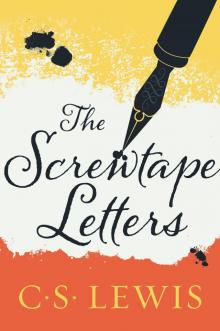 The Screwtape Letters
The Screwtape Letters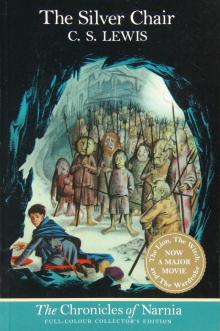 The Silver Chair
The Silver Chair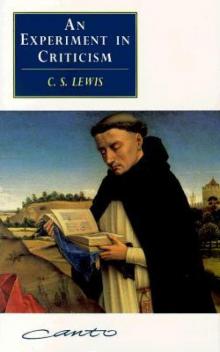 An Experiment in Criticism
An Experiment in Criticism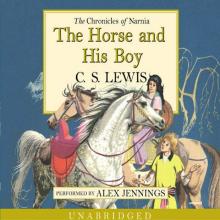 The Horse and His Boy
The Horse and His Boy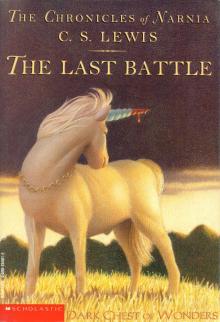 The Last Battle
The Last Battle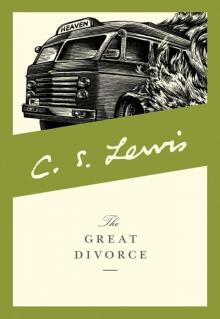 The Great Divorce
The Great Divorce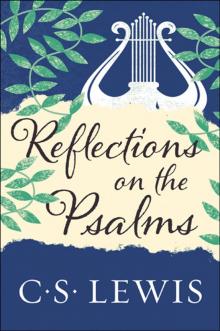 Reflections on the Psalms
Reflections on the Psalms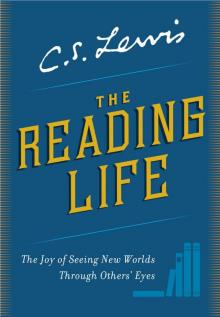 The Reading Life
The Reading Life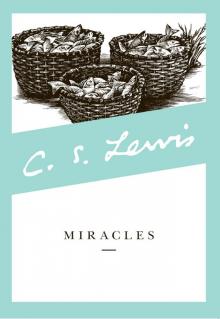 Miracles
Miracles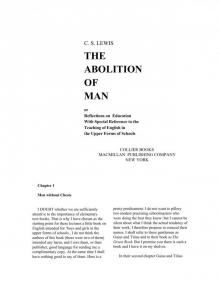 Lewis new
Lewis new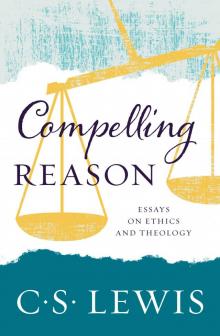 Compelling Reason
Compelling Reason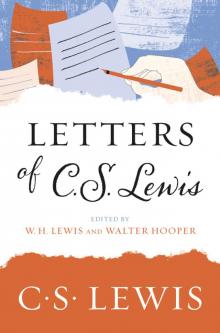 Letters of C. S. Lewis
Letters of C. S. Lewis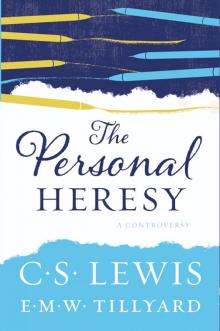 The Personal Heresy
The Personal Heresy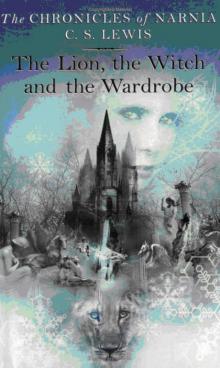 The Lion, The Witch And The Wardrobe
The Lion, The Witch And The Wardrobe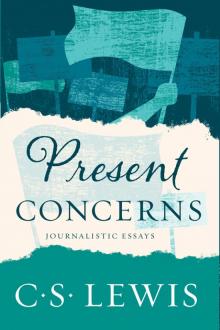 Present Concerns
Present Concerns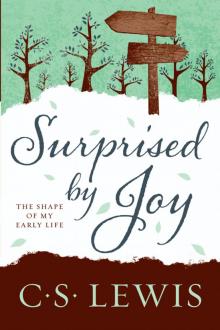 Surprised by Joy
Surprised by Joy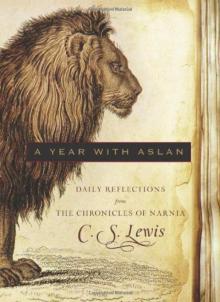 A Year with Aslan: Daily Reflections from The Chronicles of Narnia
A Year with Aslan: Daily Reflections from The Chronicles of Narnia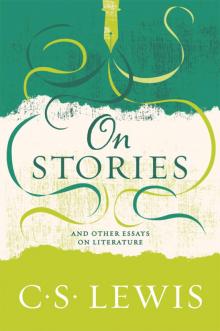 On Stories
On Stories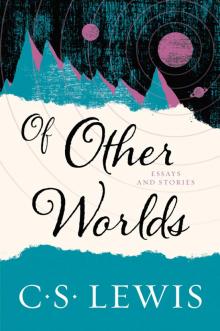 Of Other Worlds
Of Other Worlds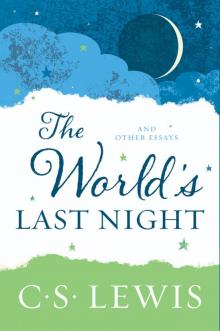 The World's Last Night
The World's Last Night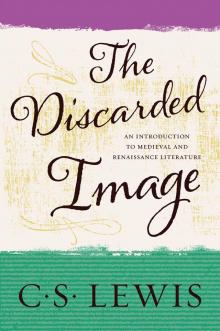 The Discarded Image
The Discarded Image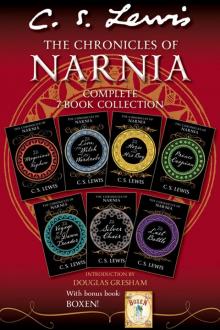 The Chronicles of Narnia Complete 7-Book Collection with Bonus Book
The Chronicles of Narnia Complete 7-Book Collection with Bonus Book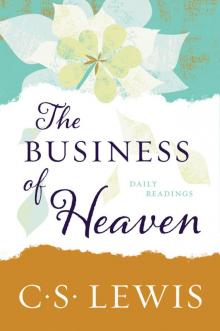 The Business of Heaven
The Business of Heaven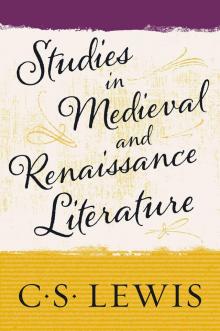 Studies in Medieval and Renaissance Literature
Studies in Medieval and Renaissance Literature The Dark Tower
The Dark Tower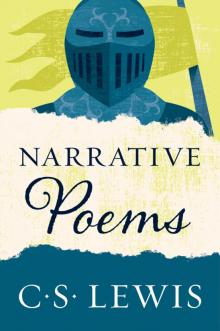 Narrative Poems
Narrative Poems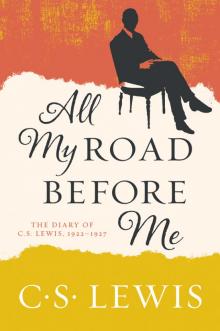 All My Road Before Me
All My Road Before Me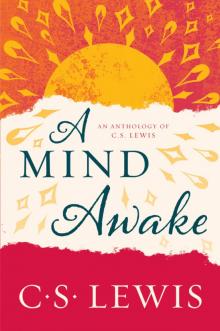 A Mind Awake
A Mind Awake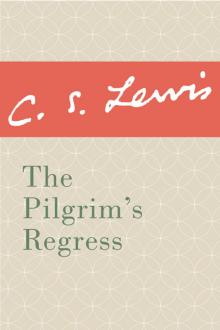 The Pilgrim's Regress
The Pilgrim's Regress